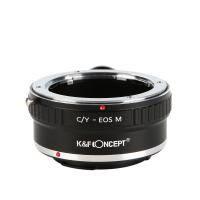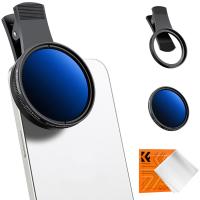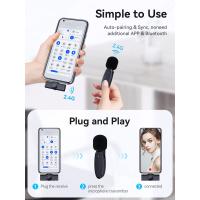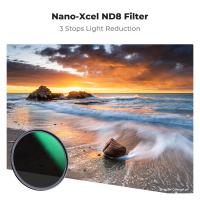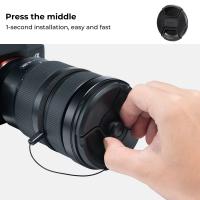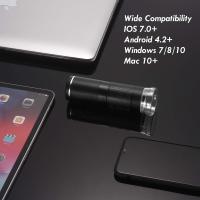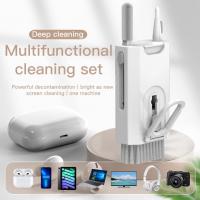How Do Endoscopes Work Bbc Bitesize ?
Endoscopes are medical devices that allow doctors to see inside the body without making large incisions. They work by using a long, thin tube with a camera and light at the end. The tube is inserted into the body through a natural opening or a small incision. The camera sends images to a monitor, allowing the doctor to see inside the body.
Endoscopes can be used to examine many parts of the body, including the digestive system, respiratory system, and urinary tract. They can also be used to perform procedures such as biopsies and surgeries.
Endoscopes are an important tool in modern medicine, allowing doctors to diagnose and treat a wide range of conditions with minimal invasiveness and faster recovery times.
1、 Optical system of endoscopes
How do endoscopes work? BBC Bitesize explains that endoscopes are medical devices that allow doctors to see inside the body without making large incisions. They work by using an optical system that consists of a light source, a lens system, and a camera.
The light source is usually an LED or a fiber optic cable that illuminates the area being examined. The lens system consists of a series of lenses that magnify the image and transmit it to the camera. The camera then sends the image to a monitor, where the doctor can view it in real-time.
The latest point of view on endoscopes is that they are becoming increasingly advanced and sophisticated. For example, some endoscopes now use 3D imaging technology, which provides a more detailed and accurate view of the area being examined. Additionally, some endoscopes are equipped with miniature robotic arms that can perform surgical procedures inside the body.
Overall, the optical system of endoscopes is a crucial component that allows doctors to diagnose and treat a wide range of medical conditions. As technology continues to advance, it is likely that endoscopes will become even more effective and versatile in the years to come.
2、 Types of endoscopes
"How do endoscopes work bbc bitesize"
Endoscopes are medical devices that allow doctors to see inside the body without making large incisions. They are used to diagnose and treat a variety of conditions, from digestive disorders to cancer.
Endoscopes work by using a small camera and light source to capture images of the inside of the body. The camera is attached to a long, flexible tube that can be inserted into the body through a natural opening, such as the mouth or anus, or through a small incision.
There are several types of endoscopes, each designed for a specific part of the body. For example, a gastroscopy is used to examine the inside of the stomach, while a colonoscopy is used to examine the colon.
During an endoscopy, the doctor will insert the endoscope into the body and guide it to the area of interest. The camera will then capture images of the inside of the body, which can be viewed on a monitor.
Endoscopes can also be used to perform minimally invasive procedures, such as removing polyps or taking tissue samples for biopsy.
The latest point of view on endoscopes is that they are becoming increasingly advanced, with new technologies being developed to improve their accuracy and effectiveness. For example, some endoscopes now use artificial intelligence to help doctors identify potential problem areas, while others use virtual reality to provide a more immersive and realistic view of the inside of the body.
Overall, endoscopes are an important tool in modern medicine, allowing doctors to diagnose and treat a wide range of conditions with minimal discomfort and risk to the patient.
3、 Endoscope insertion and maneuvering
"How do endoscopes work bbc bitesize"
Endoscopes are medical devices used to examine the inside of the body. They consist of a long, thin, flexible tube with a camera and light source at the end. Endoscopes are used to diagnose and treat a variety of medical conditions, including digestive disorders, respiratory problems, and gynecological issues.
Endoscope insertion and maneuvering is a delicate process that requires skill and precision. The endoscope is inserted into the body through a natural opening, such as the mouth or anus, or through a small incision. The camera at the end of the endoscope sends images to a monitor, allowing the doctor to see inside the body.
The doctor can maneuver the endoscope to examine different areas of the body and take biopsies or remove tissue for further examination. Endoscopes can also be used to perform procedures such as removing polyps or placing stents.
The latest point of view on endoscopes is that they are becoming increasingly advanced and sophisticated. New technologies are being developed to improve the quality of images and make procedures safer and more effective. For example, some endoscopes now use virtual reality technology to provide a more immersive and realistic view of the inside of the body.
In conclusion, endoscopes are an important tool in modern medicine, allowing doctors to diagnose and treat a wide range of medical conditions. The process of endoscope insertion and maneuvering requires skill and precision, and new technologies are being developed to make procedures safer and more effective.
4、 Endoscope cleaning and disinfection
"How do endoscopes work bbc bitesize"
According to BBC Bitesize, endoscopes are medical devices that allow doctors to see inside the body without making large incisions. They work by using a long, thin tube with a camera and light at the end, which is inserted into the body through a natural opening or a small incision. The camera sends images to a monitor, allowing the doctor to see inside the body and diagnose or treat any issues.
Endoscopes are used for a variety of medical procedures, including examining the digestive system, respiratory system, and urinary tract. They can also be used for surgeries, such as removing tumors or repairing damaged tissue.
Endoscope cleaning and disinfection is a crucial part of the process to prevent the spread of infections. The latest point of view is that endoscope cleaning and disinfection should be done using a combination of manual cleaning and automated disinfection. Manual cleaning involves using brushes and detergents to remove any debris or organic material from the endoscope. Automated disinfection involves using a machine to disinfect the endoscope with high-level disinfectants.
It is important to note that endoscope cleaning and disinfection is a complex process that requires specialized training and equipment. Healthcare facilities must have strict protocols in place to ensure that endoscopes are properly cleaned and disinfected after each use.
In conclusion, endoscopes are important medical devices that allow doctors to see inside the body without making large incisions. Endoscope cleaning and disinfection is a crucial part of the process to prevent the spread of infections, and the latest point of view is that a combination of manual cleaning and automated disinfection should be used. Healthcare facilities must have strict protocols in place to ensure that endoscopes are properly cleaned and disinfected after each use.







